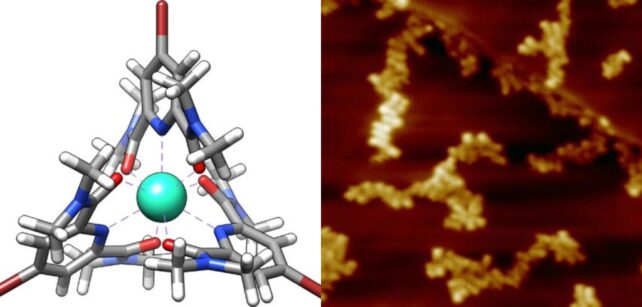Iotas might not have bones, yet we actually need to know how they are assembled. These small particles are the premise on which everything ordinary matter is assembled (counting our bones), and understanding them assists us with grasping the bigger Universe.
We at present utilize high-energy X-beam light to assist us with understanding iotas and particles and how they’re organized, getting diffracted shafts to recreate their arrangements in precious stone structure.
Presently researchers have utilized X-beams to portray the properties of a solitary iota, demonstrating the way that this strategy can be utilized to comprehend matter at the level of its smallest structure blocks.
“Here,” compose a global group drove by physicist Tolulope Ajayi of Ohio College and Argonne Public Research facility in the US, “we demonstrate the way that X-beams can be utilized to describe the natural and synthetic condition of only one iota.”

Also, there are a few methods for throwing X-beams at stuff to perceive how it’s placed together for truly minuscule scopes.
One of those is synchrotron X-beams, in which electrons are advanced rapidly along a roundabout track to the point they shine splendidly with high energy light.
To attempt to determine truly fine scales, Ajayi and his partners utilized a method that consolidates synchrotron X-beams with a microscopy strategy for nuclear scale imaging called filtering burrowing microscopy. This utilizes a brilliant sharp-tipped leading test that connects with the electrons of test material in what is known as “quantum burrowing”.
At exceptionally nearnesses (like, a portion of a nanometer), the exact place of an electron is questionable, spreading it across the space between the material and the test; the condition of the molecule can then be estimated in the subsequent current.
Together, the two methods are known as synchrotron X-beam checking burrowing microscopy (SX-STM). The intensified X-radiation energizes the example, and the needle-like finder gathers the subsequent photoelectrons. Furthermore, a thrilling procedure opens up a few pretty mind blowing prospects: Last year, the group distributed a paper on utilizing SX-STM to turn a solitary particle.
This time, they went more modest as yet, endeavoring to gauge the properties of a solitary iron iota. They independently made supramolecular congregations, including iron and terbium particles inside a ring of iotas in what’s alluded to as a ligand. One iron and six rubidium molecules were connected with terpyridine ligands; terbium, oxygen, and bromine were connected utilizing pyridine-2,6-dicarboxamide ligands.

These examples were then exposed to SX-STM.
The light the indicator gets isn’t equivalent to the light radiated at the example. A few frequencies are consumed by electrons in the nuclear center, and that really intends that there are a few more obscure lines on the X-beam range got.
These more obscure lines, the group found, are steady with the frequencies consumed by iron and terbium, individually. The retention spectra could likewise be broke down to decide the substance conditions of these particles.
For the iron particle, something intriguing happened. The X-beam sign must be distinguished when the test tip was found definitively over the iron molecule in its supramolecular structure and at very nearness.
This, the specialists say, affirms recognition in the burrowing system. Since burrowing is a quantum peculiarity, this has suggestions for concentrating on quantum mechanics.
“Our work,” the specialists express, “interfaces synchrotron X-beams with a quantum burrowing interaction and opens future X-beams tests for concurrent portrayals of natural and substance properties of materials at a definitive single-particle limit.”
That is most likely to some degree on par with bones.








































